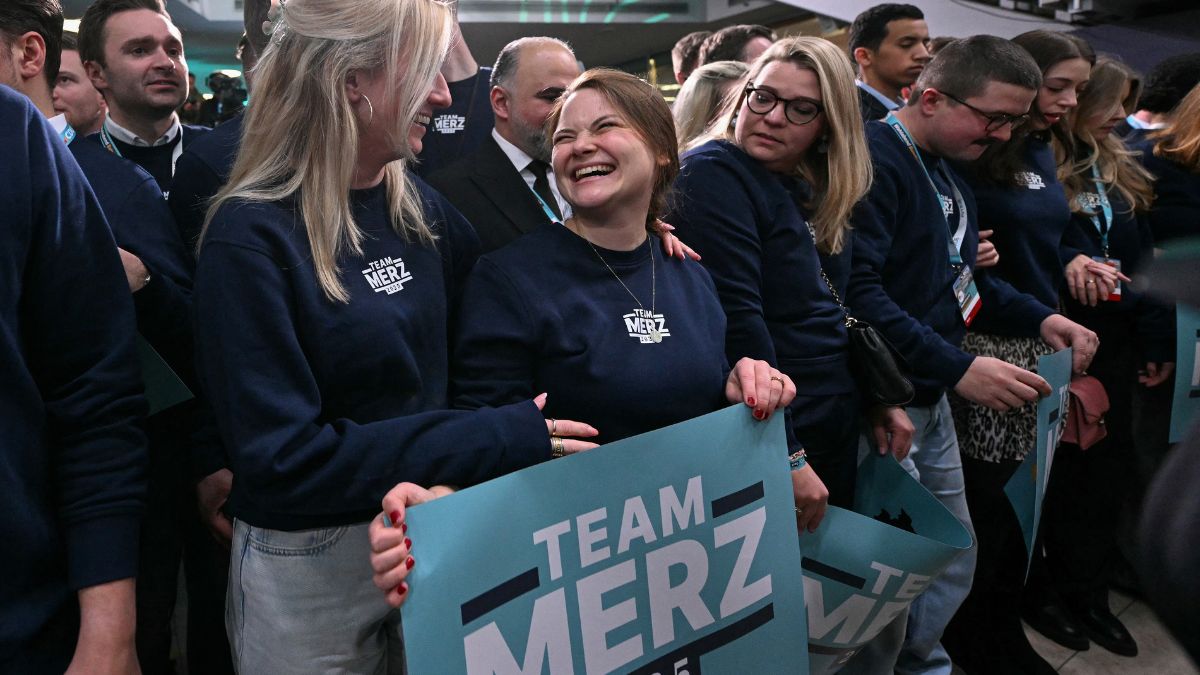Coalition politics have long been a fixture of German governance.
The country’s proportional representation electoral system, combined with the fluctuating performances of its traditional political parties– especially the centre-right CDU/CSU alliance, the centre-left SPD, and the liberal FDP– virtually guarantees that no single party will secure an outright majority in the Bundestag.
Consequently, coalitions, often described by party colours, remain essential for forming a government. For instance, the previous one was the “traffic light” coalition with the SPD (whose party colour is red), FDP (party colour: yellow), and the Greens.
Friedrich Merz, the frontrunner to become Germany’s next chancellor, now faces a challenging task. Although his CDU/CSU bloc emerged as the largest grouping, it posted its second-worst result in post-war history.
Despite this weak performance, Merz is heading into coalition talks with a strong hand.
Since the parliamentary arithmetic remains uncertain, Merz may be forced Merz to seek not just one but two coalition partners.
Merz has signalled a willingness to collaborate with centre-left parties but ruled out alliances with the far-right Alternative for Germany (AfD) or the liberal FDP.
So, what are possible coalition combinations now?
Grand coalition: Familiar but fractious
The most plausible path appears to be a so-called “grand coalition” between Merz’s CDU/CSU and Chancellor Olaf Scholz’s SPD.
Germany has seen this arrangement four times since World War Two, including three under former chancellor Angela Merkel. However, a renewed partnership would face significant policy hurdles.
Impact Shorts
More ShortsMerz has shifted the CDU/CSU further to the right, adopting a tougher stance on migration and advocating for broad tax cuts. By contrast, the SPD seeks to raise taxes on high-income earners and reintroduce a wealth tax. These divergent economic priorities could limit the coalition’s ability to enact meaningful reforms, with a potential compromise limited to easing Germany’s stringent debt brake.
While a grand coalition would offer stability, ideological divisions between the parties may hamper decisive policymaking. In a climate where Germany faces economic headwinds and investor caution, incremental governance risks further stagnation.
Kiwi Coalition: Unlikely alliance with the Greens
Another potential configuration is the so-called “Kiwi coalition,” combining the CDU/CSU (whose party colour is black) with the Greens. Despite some overlapping interests, this partnership remains less likely due to internal resistance within the conservative alliance.
Markus Söder, leader of the CSU and premier of Bavaria, has repeatedly dismissed the prospect of working with the Greens, creating a significant obstacle.
Tensions also loom over leadership roles. Merz has yet to clarify whether he would demand the exclusion of Robert Habeck, the Greens’ chancellor candidate and current vice-chancellor, from any Cabinet arrangement.
Habeck himself has remained non-committal when pressed on whether he would step aside to ease coalition formation, according to Politico .
Even if these personal and political differences were resolved, bridging the gap between Merz’s pro-market economic agenda and the Greens’ climate-focused policies would require significant concessions.
The Greens have been critical of the CDU/CSU’s stance on environmental regulations, while conservatives remain sceptical of what they view as the Greens’ interventionist approach.
Kenya coalition: Three-way pact as a last resort
Should Merz fail to secure a two-party majority, a three-way “Kenya coalition” involving the CDU/CSU, SPD, and Greens may become the fallback option. Named after the colours of the Kenyan flag– black, red, and green– this combination could offer the parliamentary majority Merz needs. However, it comes with its own set of challenges.
The collapse of Scholz’s previous three-way coalition last November, attributed to internal disputes, serves as a cautionary tale.
Carsten Brzeski, global head of macro at ING, warns that a three-party coalition risks “more muddling through and more stagnation unless all parties involved realise that this is the last chance to bring change and to prevent the AfD from getting stronger.”
According to Brzeski, without significant changes, Germany risks losing foreign investment, weakening its already fragile economic outlook.
With inputs from agencies
)